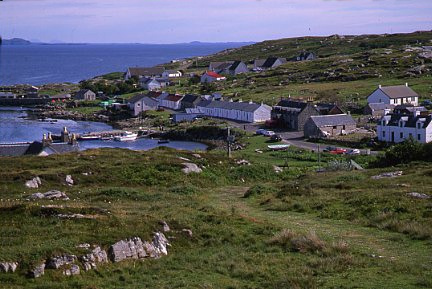Argyll councillors yesterday expressed concern after a survey revealed that just over 16% of private housing on the Atlantic islands is sub-standard.
The house condition survey for Argyll and Bute Council covers the islands of Coll, Tiree, Islay, Jura, Colonsay, Iona and Mull, which contain 3,962 private dwellings occupied by 2,917 households and a population of 6,176.
It has reviewed the condition and energy performance of the homes.
Robin Harrison, director of consultants David Adamson and Partners, told the community services committee that 81.7% of homes were non compliant with Scottish Housing Quality Standards.
And 16.3% were sub-standard according to the Housing Act 2006 and 3.1% were below tolerable standard.
Coll had the highest percentage of poor housing, with 68.4% substandard. Tiree had 7.43%, Islay, 10.3%, Jura, 46.4%, Colonsay, 52%, Iona, 33.6%, and Mull, 13.1%.
The CO2 emissions were double the Scottish average, with the average household energy costs being £1,628, significantly above the UK and Scottish average.
A total of 800 vacant and occupied houses were surveyed and 565 households were interviewed.
High levels of vacant homes were discovered. The average vacancy on the seven islands in 2014 was 26.4%, with 17% being holiday homes and the remaining 9% being generally vacant. The break-down showed that 31.5% of houses on Tiree are holiday homes.
It also showed an aging housing stock, with 46% of homes built pre 1919.
The average head of household age is 58 years across the Atlantic islands.
Of the households surveyed, 60% were on low incomes, 42% were economically retired and 24% were on benefits.
There were high levels of residential stability, 37% had been resident in their home for more than 20 years, with only 3% intending to move.
Councillor Robin Currie said: “It is very disturbing. This is very bad news indeed.”
Moira MacVicar, housing services manager, said: “Although the study is of the Atlantic islands it is reflective of the issue of fuel poverty across the whole of Argyll and Bute.
“It is certainly something that needs to be tackled by all partners.”
Mr Harrison said: “I think the islands in Scotland are neglected. We have found the same problems in Orkney and the Hebrides.”
